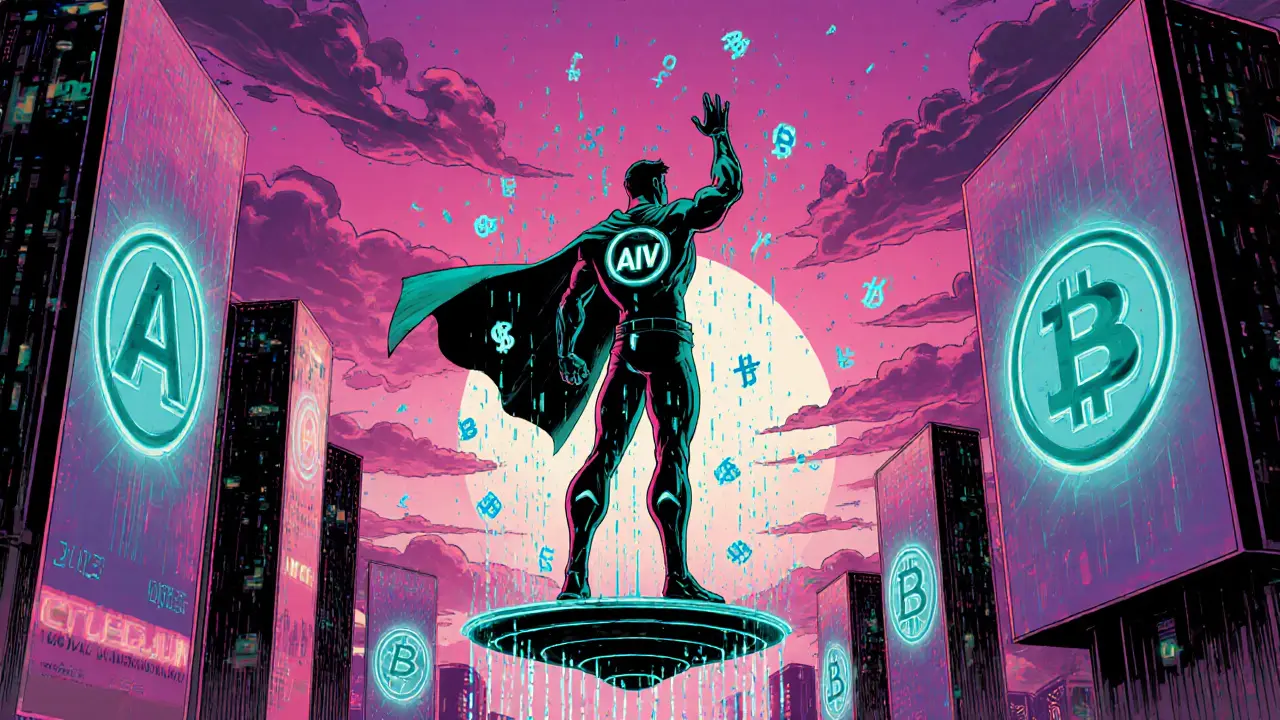When talking about gaming AI token, a digital asset that powers artificial‑intelligence features inside blockchain games. Also known as AI gaming token, it lets developers embed smart‑learning bots, dynamic difficulty, and on‑chain content generation without relying on centralized servers. gaming AI token blends two fast‑moving worlds—gaming and AI—so anyone looking to trade, build, or invest needs to understand its core mechanics.
One of the main ecosystems that host these tokens is GameFi, the fusion of gaming and decentralized finance where in‑game assets become tradable tokens. GameFi provides the financial backbone: liquidity pools, staking rewards, and yield farms that let players earn real value from play. Because gaming AI tokens often serve as utility or governance layers within GameFi titles, they inherit the same incentives and risk profiles as any DeFi token.
Another piece of the puzzle is the token airdrop, a distribution method where free tokens are given to eligible wallets to spark community growth. Projects like Knight War (KWS) and PolkaWar (PWAR) have used airdrops to seed their gaming AI token economies, rewarding early adopters and creating a base of active users who can test AI features. A well‑executed airdrop can boost visibility, liquidity, and network effects, but it also introduces volatility as recipients trade the freebies.
Beyond airdrops, the rise of gaming NFT, non‑fungible tokens that represent unique in‑game items, characters, or land deepens the value chain. Gaming AI tokens often power the minting, upgrading, or trading of these NFTs. For example, AI‑driven rarity algorithms can adjust an NFT’s attributes on the fly, creating a dynamic rarity model that reacts to player behavior. This synergy makes the token a bridge between AI‑enhanced gameplay and the tradable NFT market.
Putting these pieces together, we can see three clear semantic connections: the gaming AI token encompasses AI‑driven game mechanics, it requires a GameFi infrastructure to provide liquidity and incentives, and token airdrops influence early adoption rates. Likewise, the gaming NFT space benefits from AI‑generated content, creating a feedback loop that fuels both token demand and NFT value.
From a practical standpoint, investors should watch three attributes of any gaming AI token: the underlying AI technology, the strength of its GameFi partnerships, and the history of its airdrop campaigns. Strong AI tech—like on‑chain machine learning models or oracle‑fed data—means the token can support truly dynamic experiences. Robust GameFi ties indicate liquidity and community incentives, while transparent airdrop records help assess token distribution fairness.
Developers, on the other hand, need to ask: does the token’s smart‑contract architecture allow seamless AI upgrades? Are there built‑in governance mechanisms for community‑driven AI improvements? And can the token interact with popular NFT standards such as ERC‑721 or ERC‑1155 to unlock dynamic asset creation? Answering these questions early can save months of re‑engineering later.
In short, the gaming AI token market sits at the crossroads of AI, decentralized finance, and NFTs. Below you’ll find articles that break down modular blockchain architecture for scalability, deep‑dive into specific airdrop campaigns, and explore the latest trends in gaming NFTs. Whether you’re a trader looking for price signals or a developer scouting for the next AI‑enabled game engine, the collection offers practical insights to help you navigate this fast‑evolving space.

A clear, conversational guide to AIVeronica (AIV) crypto coin-its tech, tokenomics, market data, risks, and how to get started in the AI‑driven gaming ecosystem.